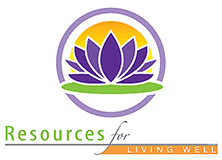The Essence of Aromatherapy
Aromatherapy refers to the controlled and skilled use of essential oils, and other extracted aromatic oils, obtained from plant material to maintain health and well being, and to prevent imbalances and illnesses on the physical, emotional, mental and spiritual levels.
The field of aromatherapy activity is quite wide, ranging from the deep and penetrating therapeutic actions of essential oils to the extreme subtlety of fragrance on the psyche.
Essential Oils are distilled extracts from aromatic plant material. They are highly concentrated and should, in most cases, be used in dilution with a suitable carrier oil or lotion. The use of pure, unadulterated essential oils is necessary to achieve a therapeutic effect.
Major points to keep in mind when working with essential oils:
Use only genuine 100% essential oils (avoid synthetic fragrance oils)
Be aware of individual sensitivity/allergy
Keep out of reach of children
Use diluted in a carrier, such as a cold-pressed vegetable oil or unscented lotion
Photo-sensitive essential oils: bergamot, lemon, lime, bitter orange, angelica root
Biochemistry of Essential Oils
Plants have been used for medicine since the beginning of time, and their biological effects and medicinal applications have been researched and well documented. Many medicines we know today were discovered from plants, such as Aspirin (Meadowsweet), Codeine (Opium Poppy), Ipecac (Ipecacuanha), Scopolamine (Jimson Weed). Essential oils are made of carbon, hydrogen and oxygen molecules. Specific effects can be attributed to the primary components of essential oils.
Psychoneurophysiology of Smell
When inhaled, aromatic molecules enter the nasal passages where they stimulate olfactory receptor sites and trigger nerve messages to the limbic center brain. The limbic area of the brain, also called the old brain, or rhinocephalon, it is thought to have evolved more than 70 million years ago and predates the neocortex. It represents a complex area with 34 structures and 53 pathways that in turn stimulates physiological responses within the body via the nervous, endocrine or immune systems, affecting sensations of pleasure, pain centers of the brain, emotions, memory, sleep, appetite and sex.
Topical Applications of Essential Oils
When used topically with a suitable dilution, essential oils have a myriad applications for health, beauty and well being. Besides being used in massage and for skin care, they are easily applied as first aid remedies. For example, the anti-inflammatory properties of Helichrysum and German Chamomile make them useful for pain management secondary to local inflammation. Essential oils can be added to many personal care products and integrated into activities of daily living to support health and a sense of a well being.
The blending proportion of essential oil to carrier (vegetal oil or lotion) depends on a number of factors, such as the desired therapeutic outcome, area of the body to be treated, the age and general health of the client. For a massage or daily body lotion, a 2% blend is appropriate. Calculate 9 drops of essential oils per ounce per percent concentration. For 2% concentration use 18 drops of essential oil to 30 cc (l ounce) lotion or massage oil.
About Aromatherapy
The uses of aromatic plant material and essential oils have been in evidence by many cultures around the world for centuries for health maintainance, as an adjunct to healing, skin care, spiritual benefit, relaxation and much more. Aromatherapy benefits are as diverse and widespread as the botanicals they are distilled from, and can be used for a wide array of physical, mental and emotional self-care assistance. Holistic aromatherapy represents a natural approach to healthcare and supports personal wellness using innate reactions in the limbic brain to normalize and balance mood and energy as well as support the healing of common skin ailments.
